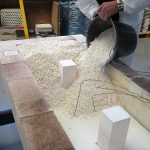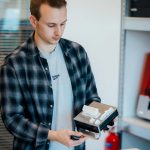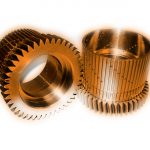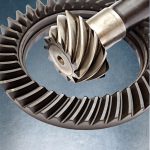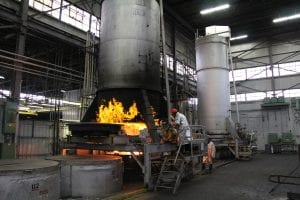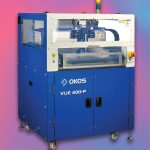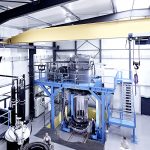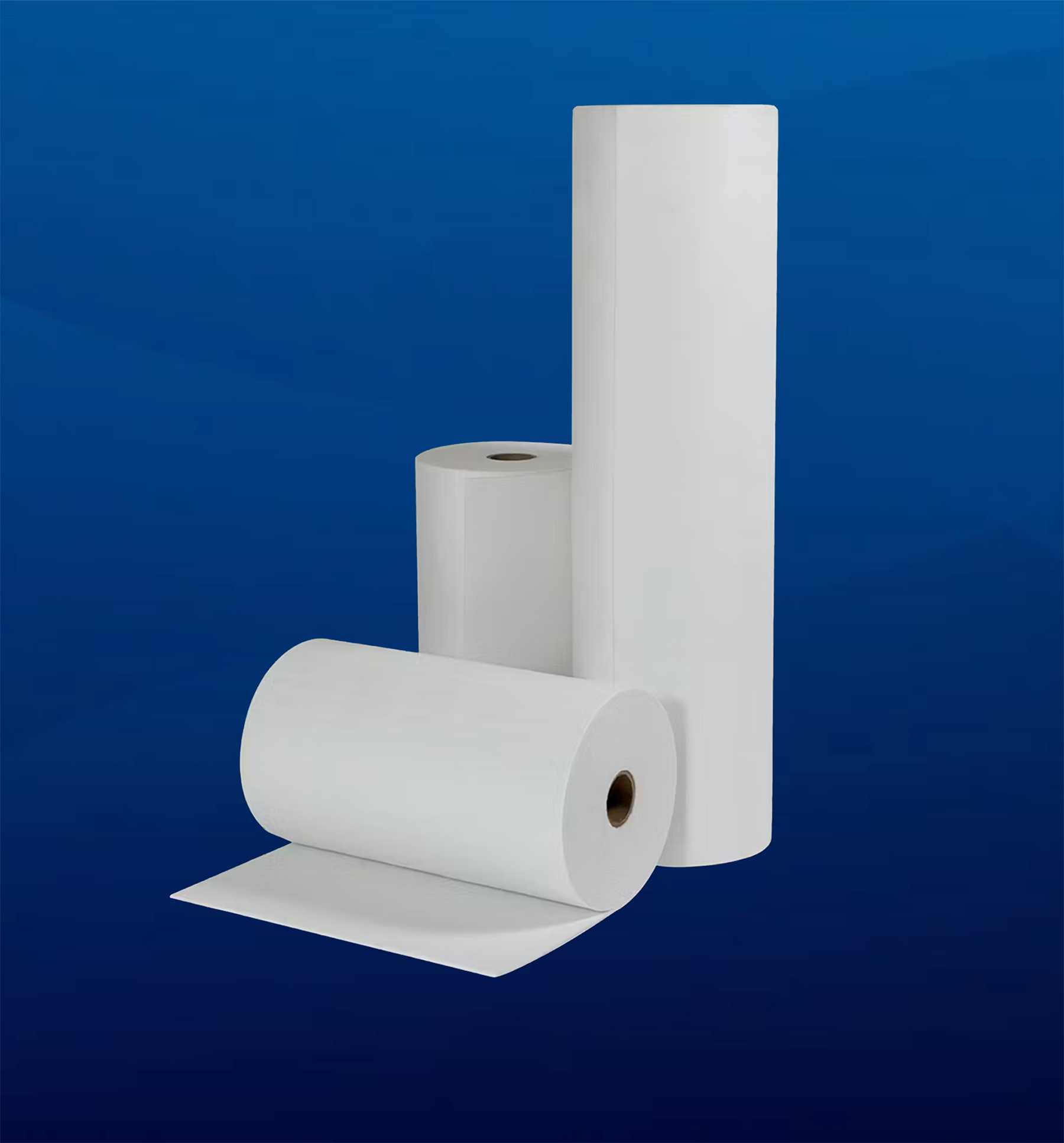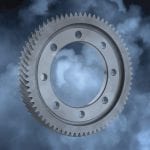Modern Industries, one of the largest heat-treating facilities in Pennsylvania, has seen its share of equipment come and go since its beginning 71 years ago. According to Bryan Jageman at Modern Industries, it’s not the furnaces themselves that have changed that much, but the technology of the controllers that control the furnaces — the ability to control them better, faster, and remotely.
“In the aerospace, defense, and medical industries, more and more of the requirements for documentation becomes more stringent every day,” Jageman said. “Every three to five years, there are upgrades that we take a look at.”
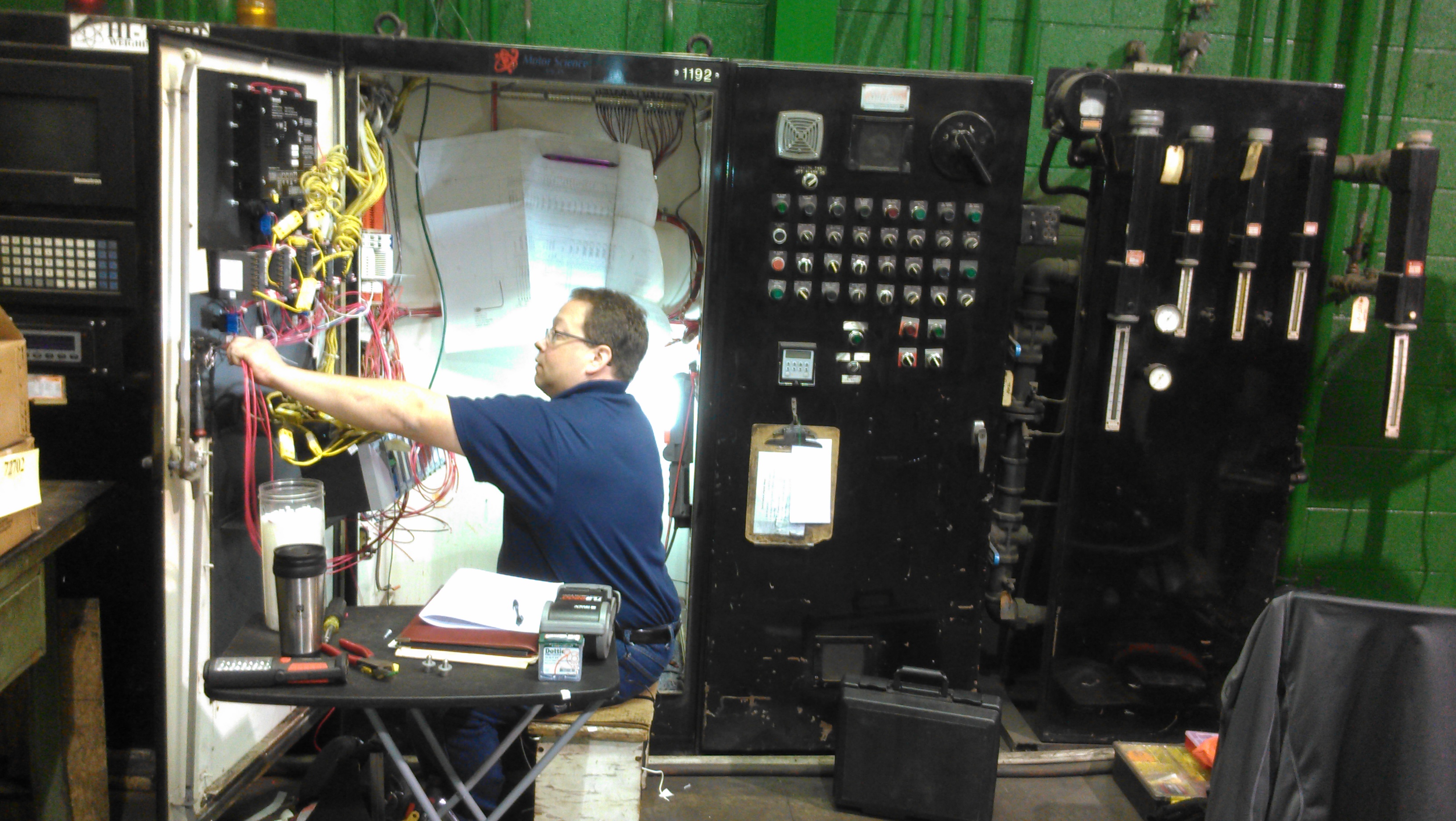 Since all of Modern Industries’ furnaces had the original controllers on them, the company set out to replace the legacy controllers on more than 30 furnaces and pieces of equipment in its facility. While interviewing different companies that sell or make new systems to upgrade original controllers and spending hundreds of hours reviewing specifications, Modern Industries saw one company — Conrad Kacsik — that stood out from the rest, offering a customized package that fit its needs.
Since all of Modern Industries’ furnaces had the original controllers on them, the company set out to replace the legacy controllers on more than 30 furnaces and pieces of equipment in its facility. While interviewing different companies that sell or make new systems to upgrade original controllers and spending hundreds of hours reviewing specifications, Modern Industries saw one company — Conrad Kacsik — that stood out from the rest, offering a customized package that fit its needs.
“We purchased the Honeywell HC900 controllers with accompanying SpecView software and hired them to do the full installation, a turnkey operation,” Jageman said. “They are very knowledgeable because they are constantly working and designing controllers all over the country. Not only did they install the controllers, but they also allowed us to add a little more technology that we possibly wouldn’t have thought of. So they brought a lot of experience to the table, and that helped personalize the controllers and software to fit what Modern does every day. Now that helps us provide the best documentation for our customers.”
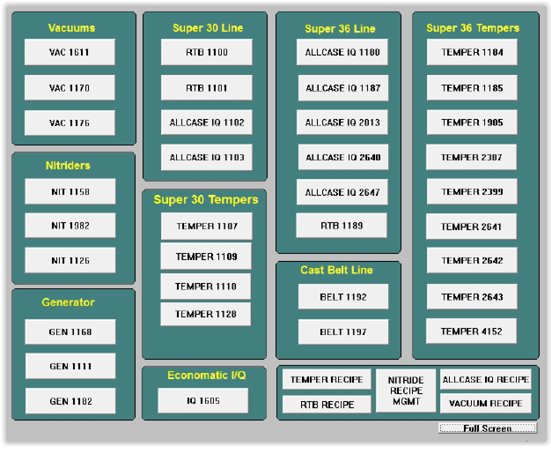
Before the installation, Modern had obsolete operator terminals with monochrome monitors that were hard to view, and according to Kevin Helsley, one of the engineers at Conrad Kacsik who worked with Modern Industries on the project, the technology had already surpassed them. Helsley and Conrad Kacsik’s engineering team showed them demonstrations, capabilities, and solutions that they could offer.
“Based on our quotations, our abilities, and competitive pricing, we were awarded the job,” Helsley said.
The Installation
Modern Industries has a wide range of heat-treat equipment including vacuum furnaces, IQ furnaces, tempers, cast belts, and nitriders. Conrad Kacsik integrated all of the equipment into one data collection system.
“We replaced the controllers, the operator interface, and the PLC racks with the Honeywell HC900 PLC hybrid controller with touchscreen HMI,” Helsley said.
Terry Newton, another Conrad Kacsik engineer for the project, said the team selected the Honeywell HC900 because it suited Modern Industries’ customization and expansion requirements.
“HC900 is a PLC-based controller made specifically for process control,” Newton said. “We’ve used it from its inception and have always achieved good results out of it. It is a Honeywell product, not a Conrad Kacsik product, so customers are not married to us afterwards like they would be with other companies that sell proprietary systems. If they want more local support after the project is done, they don’t necessarily have to come back to us for everything. It’s a standard off-the-shelf product that we’ve assembled into an engineering package.”
However, Modern Industries continues to call on Conrad Kacsik for additional support to add more furnaces, integrate more features into the system, and troubleshoot any issues. The SpecView software installed by the engineers gives them the ability to remotely log in to the HC900 Supervisory Control System at Modern’s plant.
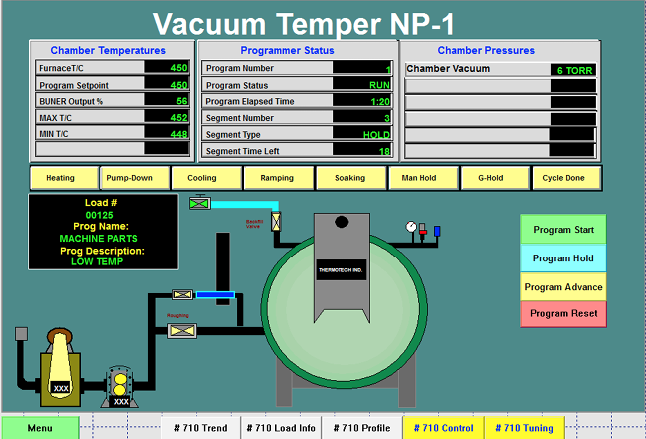
“For example, by logging in remotely, we can see that the controller is functioning properly, but they might have a bad device on their furnace, and we can pinpoint it for them,” Newton said. “Another feature of SpecView is that it does its own data collection, so they have redundancy built into their system. If the computer collecting all of their data crashed or there was a power outage, the information is stored locally on each machine. They will never lose data. It’s always there.”
Conrad Kacsik worked closely with Modern Industries to develop scenarios for the control systems for carbon potential.
“From furnace to furnace, you will always have differences depending on the condition of the furnace, leaks, age, etc., and by utilizing our control schemes, we were able to match it up per furnace,” Newton said. “Every one had a different logarithm built into it.”
“They would put a sample in the furnace, and then we would take the sample and break it down,” Helsley said. “It would give us an actual reading of the percent of carbon in it, and we kept modifying our control scheme for our system to match their results from their testing, because their testing equipment was very good.”
While multiple furnaces are connected on one control in the HC900, Modern Industries has the ability to look at the data individually for each furnace with the HMI touchscreen or the Specview SCADA package. Using Specview, a profile manager was developed for each furnace type within the plant. For example, this feature allows Modern Industries to develop a single profile for a furnace type and send it to 13 of their tempers at once, while they are in process.
Challenges
With both Modern Industries and Conrad Kacsik acknowledging that it would be a difficult task to undertake a plant-wide system upgrade that would take a year to complete, the companies implemented necessary steps to handle the project in the most efficient manner and minimize the impact on Modern’s operation.
“We had to integrate our system while Modern maintained production, working with their production schedule,” said Pat Dunn, another engineer on the Conrad Kacsik team. “We had to have the furnaces available to us and get them offline and done in an efficient manner that didn’t disrupt their production.”
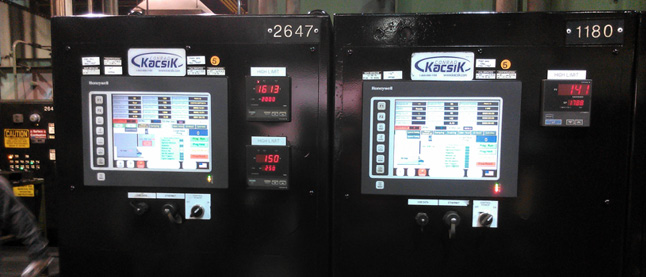
The installation was broken into four segments, shutting down one furnace line at a time.
“If we didn’t have the furnace line shut down and prepared, they would not have been able to start, and that would have put us behind,” Jageman said. “But that never happened. We were ready for them.”
Jageman said the preplanning and coordination from both companies alleviated any scheduling issues and delays that might normally happen in a project this large.
“It was pretty seamless,” Jageman said. “This was a yearlong project, and we met every week to review the progress. We discussed potential problems and solutions, and then put together the next weeks scheduling goals. We had to make sure we could dream up any problem that could arise and have a reaction plan in place. It might take two to three days for preplanning, but avoiding setxbacks is invaluable.”
There are always challenges with training employees with a new system, but dividing it into three-month installation periods helped the team at Modern get up to speed.
“By the time we finished one line that took three months, our crew was adept with it, and by the time it was all done, the crew was proficient with it,” Jageman said. “The training that goes along with the installation is invaluable.”
The Results
Modern’s previous furnace-control systems consisted of standalone, menu-driven controls with monochrome displays. The operators now have a graphics-driven system, touchscreen HMIs, and an easier menu system that they enjoy working with versus the multiple menu levels. Before, they could only look at data points and try to reconstruct what happened, but now it’s visual. They can see where they stay within tolerances and that their processes ran correctly.
With the new SpecView system, authorized personnel at Modern can view what’s happening in the system while sitting at their desks. They can also access the sytem remotely through the internet. SpecView was programmed into each computer to mirror all of the individual HC900 control station screens and to provide furnace operators with recipe-management capability. Customized screens were also developed to enable customer names, part numbers, part quantities, and additional information to be combined with individual furnace data.
There are benefits from a maintenance aspect as well. If Modern had a circuit board problem with the old system, they would need to send it out to have someone rebuild it — a costly and inefficient procedure. Conrad Kacsik stocked the parts at Modern’s facility that are integrated in the system, so if they have a breakdown, they can call them and it’s an easy turnaround.
Also, with the HC900 as a PLC-type control, individual cards can be hot-swapped. For example, the legacy control running six tempers would normally have to be shut down, affecting all of the tempers, in order to repair or replace that control. With the new system, individual cards can be pulled out while everything else is still running. The card is replaced, and the system can be back up quickly, eliminating downtime and associated costs.
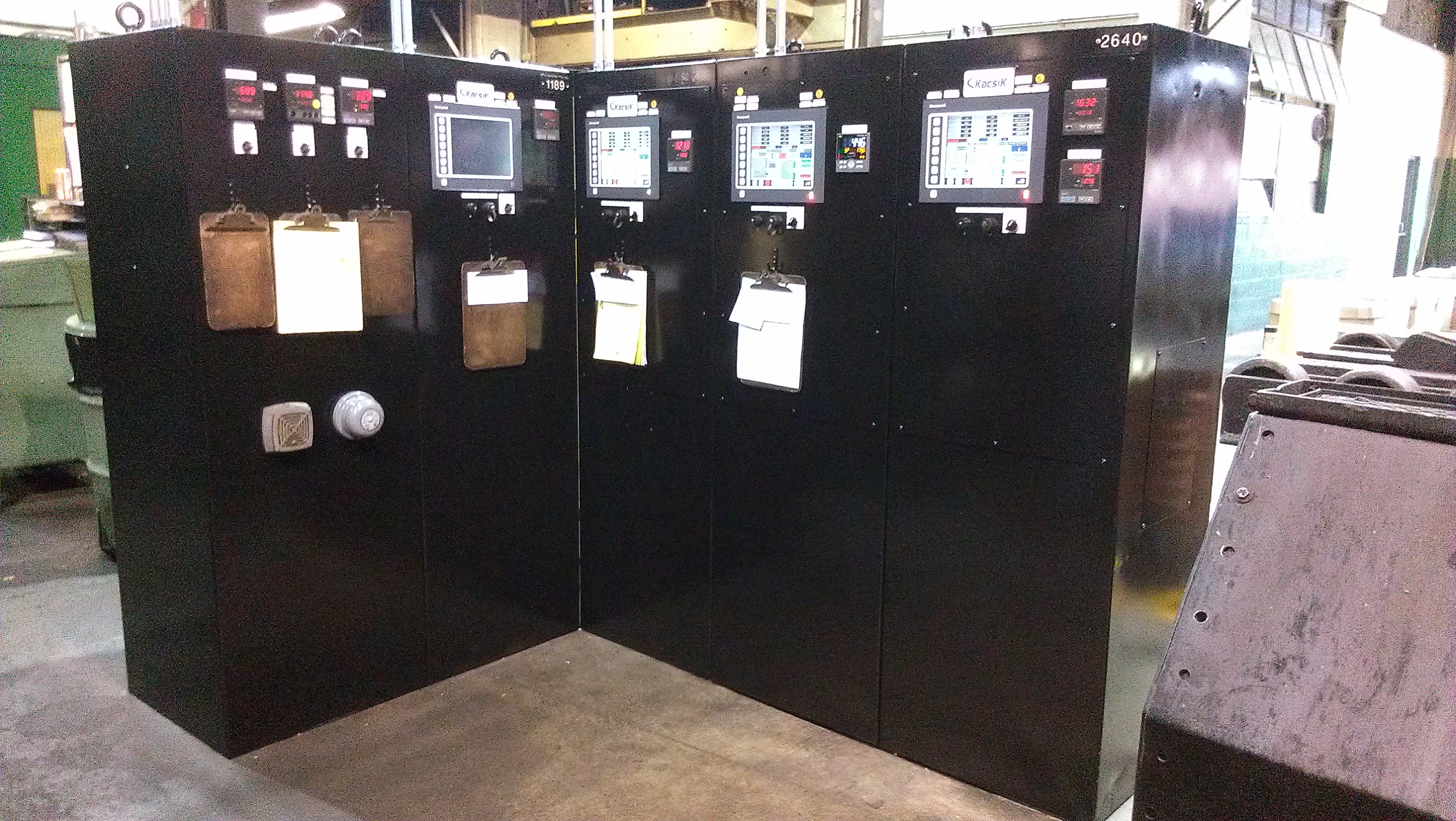 According to Jageman, the results from the upgrade are benefiting Modern Industries’ customers as well, through reduced cycle times, more capabilities, and more accurate documentation.
According to Jageman, the results from the upgrade are benefiting Modern Industries’ customers as well, through reduced cycle times, more capabilities, and more accurate documentation.
“Since all of our furnaces were included in the upgrade, it has added to our ability to service our customers and opened up more capacity for customers that we didn’t have before,” Jageman said. “Now that we are able to more accurately track and document the processes and functions of our furnaces, Modern can provide state-of-the-art service to all of their customers.
Jageman said system accuracy tests (SATs) and furnace uniformity surveys are now easier because the documentation is more readily available and can be transferred to its quarterly surveys and SAT record files.
“It’s all dropped into a file, and each furnace has a file,” Jageman said. “Whenever we have an audit, it’s right there and easy to open. For record-keeping purposes and the transfer of data and documentation, we save time and money.”
It’s also helped Modern improve accuracy of documentation.
“In a previous Nadcap audit, we had some nonconformances for pyrometry, but since we’ve had this system installed, our last audit was so successful that we achieved Nadcap merit status,” Jageman said. “I believe the software and the technology that Conrad Kacsik brought helped us obtain that. And that alone speaks volumes.”
Conrad Kacsik has expertise in pyrometry that helped ensure that Modern Industries uses the new software and the new accuracies to improve audits and the way they track product as it goes through the shop.
“They installed software to get the most benefits out of our equipment,” Jageman said.
Conclusion
Overall, the new system has made processes more efficient and less manual, so Modern can track data more easily, and, in turn, produce better parts and help its customers.
“One of the things we pride ourselves on, when we sit down with a customer, is that we work to understand their processes so that we can find a solution to their problems,” Dunn said. “Our goal is to develop a solution in a cost-effective manner. Not every customer may need the sophistication of the PLC system that we installed at Modern. We use controllers from multiple manufacturers: Watlow, Honeywell, Eurotherm, Future Design Controls, Yokogawa — to provide a solution to each specific customer’s needs. A smaller customer might need another solution, so we offer a lot of options, depending on what the situation requires.”
Once the installation was complete, Jageman said members of his crew were like kids at Christmas.
“They were excited about the upgrade and the changes — all of the new toys they have to play with and all the things that they wished they could do in the past, they are now able to do,” Jageman said. “They couldn’t wait for it to be complete. Everyone was very pleased to see the upgrade, and our customers are impressed. Every one that comes through here says it’s state-of-the-art.”













